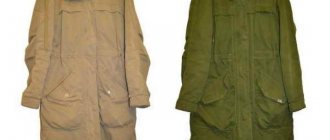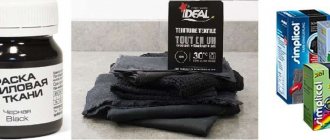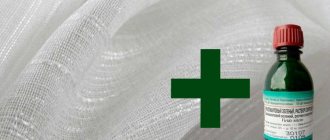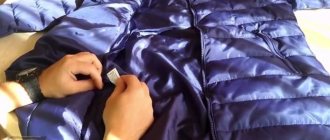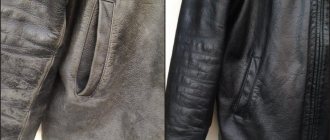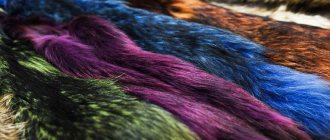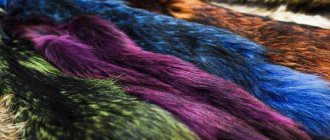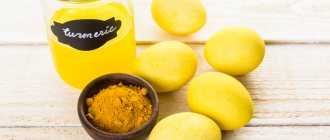White tulle is a classic option for light and airy curtains. But over time, the fabric turns yellow or gray and loses its snow-white appearance. Sometimes even special bleaches cannot restore freshness, whiteness and original color. In this case, painting will come to the rescue.
In addition, you can paint the tulle if it has not yet lost its attractiveness, but you are already tired of the color of the curtain and want to add new colors to the interior of the house. By the way, tulle is used not only for making curtains and curtains.
Light, airy and transparent fabric is used for sewing clothes, including wedding dresses and underwear. Tulle makes luxurious canopies, bedspreads and even bedding sets. In any case, the products can be painted. In this article we will look at how to paint tulle at home.
Painting products
Many people are interested in the question of how to paint tulle. In this case, painting agents are divided into natural and chemical. The latter include special aniline dyes, blue, potassium permanganate and even brilliant green.
Chemical dyes are characterized by ease of use, a wide selection of colors and shades. But such agents act quite aggressively on the fabric. In addition, after painting, the material will retain a sharp, specific odor for a long time.
Natural products have a safe effect on the material, so even thin, openwork and delicate fabrics can be dyed. In addition, they do not leave an unpleasant odor. Despite the small selection of colors, natural paints provide a noble and refined shade. At the same time, it turns out to be more natural than when using chemicals.
In this case, decoctions of herbs, vegetables and fruits, tea and coffee are used. Beetroot juice is very often used, which gives a rich and luxurious shade. If you prefer natural dyes, keep in mind that carrots produce orange, dandelion or calendula produce yellow. Blackberry dyes the fabric black or dark blue, and yarrow or dock green.
Onion peels will give you a shade from yellow to brown, depending on the concentration of the solution and the exposure of the fabric. How to paint a white curtain depends on preferences and capabilities. In any case, the material must first be prepared for painting.
Choosing a dye
After the preparatory stage, you need to decide what color you want to get the textile product. A large selection of aniline dyes sold in retail chains will help you dye nylon mesh or dense fabrics in the desired color. Choose a product that matches the material and intended color.
It is not difficult to color curtains and tulle with purchased dyes; the main thing is to strictly follow all the steps prescribed in the instructions.
But not only aniline agents change the color of window curtains. You can color roller blinds and all other window treatments using available substances that can change the shade of the fabric. This is easy to do using:
- Tea leaves.
- Brilliant greenery (zelenka).
- Potassium permanganate.
- Onion peel.
- Juice of some products (beets, blueberries, blackberries, spinach).
- Coffee.
Preparatory stage
Before painting, thoroughly tap and shake out the product so that no dust, small specks or dirt remain. Otherwise, the coloring will turn out uneven. Then wash the fabric in warm water and a suitable detergent. For tulle, it is better to choose liquid gel or washing shampoo. In addition, you can prepare a soap solution from water and liquid soap or shavings of laundry or baby soap. How to make homemade laundry detergent, see here.
For natural fabric, choose a temperature of 40 degrees, for synthetics - 30. It is advisable to wash by hand; in the washing machine, set the gentle or gentle mode. During the washing process, do not squeeze or twist the fabric too much. After the procedures, rinse the curtains thoroughly and do not wring out the material, but hang it up to drain. Then the products will not have to be ironed.
Carefully straighten the tulle so that folds and creases do not form. Otherwise the coloring will be uneven. Leave until completely dry. Repeat the procedures if necessary. In order to dye the fabric efficiently, reliably and evenly, it is important that it is perfectly clean and even.
Tips for caring for the product
In order for painted tulle to please its owners for a long time with its updated look, it is worth following the recommendations for proper care of it:
- do not add too much powder during washing - this harms the structure of the fabric and washes out the paint faster;
- When washing items for the first time, add color fixative to the water (sold in hardware stores);
- Wash thin fabric by hand or on the most delicate cycle, otherwise it may be damaged, or place it in a special bag when washing;
- Do not wash tulle in hot water - use only warm or even cold water;
- Do not iron the tulle with a hot iron, as it may turn yellow.
Using inexpensive dyes, you can completely transform the look of curtains, giving them a new color, brightness and richness. The process will not require much time, but will allow you to fully express your taste and imagination.
Aniline dyes
Aniline paints are the simplest and most comfortable way of painting. They are a colored powder that must be diluted in water in proportions according to the instructions. Before use, be sure to study the recommendations for using paint and the product label, otherwise you may ruin the tulle or get a completely different color. Things are soaked in the resulting solution, then rinsed in clean water and left to dry completely.
You can dye the tulle in the washing machine. This will speed up and simplify the procedure, ensure intensive mixing and uniform coloring. First, also shake out, wash and dry the curtains. Dilute the coloring powder according to the instructions and pour the resulting mixture into the drum of the washing machine. We also put curtains here.
Turn on the washing mode without pre-soaking and without spinning at a temperature of 30-40 minutes. Having repainted the fabric, take out the curtains and run the machine in rinse mode without washing and without clothes. It is recommended to repeat the procedure, otherwise residual dye may remain inside, as a result of which the subsequent batch of light-colored laundry may be stained.
Pay special attention to nylon tulle. This fabric is more difficult to dye than others. In this case, it is recommended to add salt to the coloring solution in the amount of a tablespoon per ten liters of water.
Dyeing tulle in the washing machine
Painting with a washing machine has its advantages:
- relief of manual labor;
- more intensive mixing, resulting in uniform coloring.
There are disadvantages:
- as a rule, additional time is required;
- risk of slight staining of white items during subsequent washing.
The principle of painting is similar to manual:
- shake out, pre-wash, but do not wring;
- dilute the dye according to the instructions (special products) or according to recommendations (folk);
- pour the concentrate into the drum;
- we put the curtain there;
- select the washing mode without spin;
Important! Machine wash only without pre-soaking, otherwise the color may be uneven.
- We take out the curtain and start the machine without laundry to rinse.
Zelenka and potassium permanganate
To paint tulle with brilliant green, a few drops of the product are dripped into a glass and filled with water. Leave for five to ten minutes and stir. Keep in mind that brilliant green does not dissolve immediately! Therefore, you must wait a while and then strain the solution into a container with warm water where you plan to paint.
If you want a light green color, use a pale solution. For more saturated shades, take a bright mixture or dye several times. In any case, brilliant green does not give a completely natural color, unlike natural ingredients. For example, yarrow, sorrel and other greens.
Place the curtains in a solution with brilliant green and leave for a while. To ensure uniform coloring, turn the material periodically. When it reaches the desired color, rinse the tulle in clean water and set to dry.
Painting with potassium permanganate is done in the same way as brilliant green. Dissolve a few drops of the product in a glass, then add warm water and leave for five minutes. Stir and strain the solution into a container of warm water. Soak the tulle in the mixed mixture for 15 minutes.
During the process, turn the material regularly and then rinse in clean, cool water. Painting with potassium permanganate will produce a lilac, lilac or violet color, depending on the concentration of the solution.
How can you dye fabric?
If you do not take into account the composition of the material, you can paint the product as follows:
- Pour dry powder dye into a glass of water, dissolve it and strain through cheesecloth.
- Add the dye to a metal bowl with the prepared clothing and pour in enough hot water to completely cover the item.
- Place the container with the product and dye on the stove and bring the liquid to a boil. Clothes must be constantly turned over so that the material is dyed evenly. After 20 minutes from the start of boiling, salt is added to the water (from 2 to 5 tablespoons). This is necessary so that the color becomes more saturated.
This is a home interpretation of how fabrics are dyed in production. You need to evaluate the resulting color of the product not immediately as soon as it has been painted, but after it has dried. The result largely depends on how correctly the raw materials were prepared.
Important! The container in which the factory dye was used can no longer be used for cooking.
Dyeing depends on the type of fabric. So, for wool, as a rule, acid dyes are used, and in addition to salt, vinegar is also added to the water during the dyeing process. It is also used when rinsing dyed silk, which makes it possible to better fix the color on the material. Before you dye synthetic fabric, you need to weigh the pros and cons in advance. It is very difficult to paint such material. Sometimes the paint doesn’t stick at all, but simply drips off the clothes like cellophane. If you still need to paint, then it is better to choose a suitable disperse paint in advance.
Folk remedies
Loose leaf tea or coffee will help you get a creamy, beige or brown color. Pour boiling water over one or two tablespoons of coffee or tea and brew for ten minutes. Then strain and pour into a container with water at a temperature of about 30 degrees. Mix the solution and put the tulle there. Soak the curtain and turn it regularly. When you get the color you want, rinse in clean, cool water.
To dye beetroot tulle, wash, peel and cut the vegetable. Pour vodka over the pieces. To obtain a rich shade, use a liter of vodka per kilogram of beets. To obtain a delicate color, 0.5 liters of vodka is enough. Boil the beets until tender and strain the solution.
Pour the strained mixture into a bowl of warm water and mix. We lay the curtains and soak them, turning them over during the process. When you get the desired shade, rinse the tulle. To dye with other folk dyes, make a decoction of the required concentration and also soak the tulle.
Tea and coffee
To give window curtains a beige or cream color, you can use tea leaves or ground coffee. Dying fabric with tea at home is as easy as using other natural dyes. Two teaspoons of tea leaves or coffee is enough to prepare a coloring solution. They need to be dipped in 1 liter of boiling water, wait until completely dissolved and strain. Then put the material to be painted into this “decoction”.
If the tulle is very large, then increase the proportions of coffee (tea) and water.
How to paint tulle blue
Blue is a mixture of starch and dye, which is produced in the form of a liquid solution or powder. It gives the products freshness and the right shade. For high-quality and reliable painting, it is important to choose the right blue. In this case, choose only a water-soluble composition to obtain uniform coloring!
When painting with blue, keep in mind that it is only suitable for natural fabrics. In addition, this is not a permanent dye that will gradually wash out. When choosing, remember that a quality product will not stain the bathtub, hands, or various surfaces. If it leaves marks, don't use bluing. Otherwise, it will leave stains on the curtains.
To dye with blue, wash, rinse and dry the item. Dilute the powder or liquid according to the instructions to a homogeneous mixture of uniform color without clumps of coloring matter. Pour the solution into a container, place, distribute and arrange the tulle so that the water completely covers the fabric.
It is important that there are no kinks or folds, so it is better to paint the item in the bath. Here you can lay out the fabric completely. For a light blue tint, leave the tulle for a few minutes, for a deep blue color - for an hour. To preserve the color and physical properties of tulle longer, add a little table salt when rinsing. In addition, it is important to ensure proper care of the fabric. How to properly wash and iron tulle, see the link.
Preparing tulle for painting
You only need to dye a clean item that has been previously washed and degreased. Otherwise, the tulle paint will lie unevenly and the fabric will become stained. The preparation technology will be as follows:
- remove the tulle from the window, remove the hooks and decor, knock the product out of dust;
- pour hot water over the material;
- After a few minutes, the water is drained and this manipulation is repeated 2 more times;
- wash the product with washing powder on a delicate cycle in a machine or by hand;
- rinse the tulle with the addition of lemon juice or citric acid, let it dry in the fresh air, away from heating appliances;
- select the dye by color and begin painting.
Before drying, do not wring out the tulle, twist it, or apply any other mechanical force. This will lead to the appearance of creases, and subsequently the product may be painted unevenly.
Coloring tulle correctly
In order to paint the curtains correctly in the walls of the house, you first need to properly prepare for this procedure.
To dye white tulle in any other selected color (beige, pink, brown, green, yellow), use an industrially produced aniline dye. You can also dye tulle using folk remedies: tea leaves, potassium permanganate or brilliant green.
After the choice in favor of one color or another has been made, the dye has been purchased, you need to prepare a detergent for washing the product. It can be either granular washing powder or liquid laundry detergent. For the staining procedure, it is necessary to prepare an enamel container of suitable size.
You also need to have 2 cups of table salt on hand, which helps thoroughly wash the product from dust and dirt and will help it acquire a brighter color when dyed.
At the preparatory stage of staining, you must do the following:
- Remove the curtains from the curtain rod and soak them in warm water. You don't need to take very much water.
- After the water becomes cold, it must be drained and the procedure repeated up to 3 times.
- After the soaking process, you need to start washing the product. It is better to perform this procedure by hand so that machine washing does not damage the structure of the fabric.
- After washing, the tulle should be rinsed thoroughly, changing the water several times. Then the product should dry naturally (in the room or on the balcony). Drying tulle using heating devices or on a radiator is not recommended.
If you decide to use a synthetic dye, then first carefully study the instructions that come with it. Follow all recommendations without deviating a single step. The coloring composition is diluted with warm water, then tulle is placed in it for the time specified in the instructions. After dyeing, the product is thoroughly rinsed under running water.
Dyeing fabric at home: pros and cons
Before you dye fabric at home, you need to evaluate in advance all the pros and cons of home dyeing.
The advantages (pros) are as follows:
- for home dyeing, aniline dye for cotton fabric is used, which allows you to dye products easily and quickly, even for a beginner in this matter;
- renewal and restoration of things, bringing old products back to life;
- obtaining intense, long-lasting color;
- safety of the dyeing procedure (especially when using natural dyes for cotton fabrics based on vegetable and fruit juices). You can read general advice on caring for materials in the section “How to care for fabrics”.
Negative aspects of home dyeing:
- dyeing clothes is not as easy as it seems at first glance, and the resulting dyeing result does not always coincide with what you expect to see;
- During the first 2-3 washes, the clothes shed a lot, and even after that you will have to add vinegar to the water so that the paint does not wash out;
- Cotton fabric dye is intended only for cotton and other natural materials and does not dye synthetics very well.
Before dyeing an item, be sure to read the instructions for the dye. This will allow you to achieve a really good result from the planned procedure.
Over time, any clothing fades and fades. If you don't want to buy a new item, you can work on old clothes. To do this, you need to figure out how to dye fabric at home.
It should be noted that ordinary paints are not suitable for restoring clothing. There are special dyes that allow you to dye T-shirts, jeans and other things without outside help.
Recommendations for dyeing clothes and tulle:
- The most important and main advice. Before you start directly painting clothes, weigh the pros and cons. Amateur painting is always a risk.
- Know the composition of the fabric, because the entire painting result depends on the composition of the fabric:
- if the fabric is natural, for example: cotton, linen, denim, then, as a rule, dyeing goes well;
- if the fabric is mixed, the color will come out a little paler, for example, it will not be blue, but light blue.
- if the fabric is 100% synthetic, there is a very high risk that the fabric will not dye at all, because with synthetic fabrics, the paint flows off like cellophane, and the product will remain exactly the same shade as before dyeing.
Important! Please note that, unfortunately, at the moment there are more and more cases when the composition that is written on the label does not coincide with reality.
- Decide on a color. We recommend dyeing in colors that are slightly darker than the original shade of the fabric. For example, blue is best painted blue or dark blue. Also, do not forget to take into account the original shade of the item. The ideal option is if they are similar colors. But if you dye white jeans black, you will end up with gray or dark gray, but not black.
- Only judge the final shade on a thoroughly dried dyed item, because wet items are always darker.
- If color is very important to you, dye a test piece of fabric that will be the same in composition, dry it and look at the result.
- If you don’t like the shade of the paint you prepared, it’s better not to risk it. In industrial conditions, shades of paint are tested a large number of times, achieving the required color. At home, you only have 1 try.
- Paint only with gloves on. Wear gloves before opening the paint package if you decide to use an industrial solution rather than the options we offer. When working with medical solutions, also do not ignore gloves, so as not to think later about how to wipe off brilliant green or potassium permanganate from the skin.
- Paint items according to the instructions written on the packaging when using industrial dyes.
What can you use?
“How to dye tulle and what is best to use for this procedure?” − this question arises among many owners of window curtains. Today there are many color options for synthetic fabric dyes. Anyone, even the most capricious housewife, can choose an individual shade for the curtain that you will not find in anyone else’s house.
The choice of dye is an individual matter. Each woman herself determines which one is better to use: professional or made with her own hands from pharmaceutical and improvised means.
As mentioned earlier, if you want to use factory dye, then the choice of color will be obvious, you just need to purchase the right one.
If you decide to use folk remedies, then you need to know what you need to have on hand to obtain the desired shade.
- Green. To obtain a green color, you can use brilliant green.
- Pink or purple. For these shades you can use potassium permanganate.
- Brown. Tea leaves or coffee grounds will help you get a brown color.
- Blue. To dye tulle blue, bluing is suitable.
- Red. Fukortsin will help repaint the product red.
Dyeing tulle at home is not as difficult as it seems. It is only necessary to strictly follow all points of the instructions when choosing an industrial dye. Before starting work, you should carefully read the instructions for the product.
Industrial dyes
As mentioned in the previous section, you should not experiment with industrial dyes at your own discretion. It is necessary to scrupulously observe proportions and maintain the required time.
The coloring composition is first diluted with water in a small container, then thoroughly stirred until a uniform color is obtained. Then the dye is added to the main portion of water, only after that the tulle is lowered into it.
Manufacturers of industrial dyes advise adding table salt to water to fix the color for a long time. The manufacturer indicates on the packaging how much salt to add.
The advantages of industrial dyes are that they are quite easy to use (compared to folk remedies) and the choice of colors is huge.
The disadvantages include the fact that factory dyes have a strong chemical effect on the product at the time of dyeing, which can have a bad effect on the fabric. Also, industrial-type dyes have a specific, rather persistent odor, which cannot be gotten rid of immediately.
Folk remedies
Folk remedies for dyeing curtains at home are no less popular than industrial ones.
Products for dyeing tulle at home:
| Desired color | Means | Mode of application |
| Cream, brown | Tea | 2 teaspoons of tea leaves are poured into 1 liter of boiling water and the tea is allowed to brew. Then it is filtered and the curtain is dipped into the resulting composition. What color you get depends directly on the time of dyeing. After dyeing, the product must be rinsed. |
| Pink, lilac | Manganese solution | A small amount of potassium permanganate is diluted with warm water and the product is placed in it. The holding time is determined independently. After dyeing, the tulle is thoroughly rinsed. |
| Green | Zelenka | The method of staining with this preparation is the same as the previous one. |
| Yellow | Onion peels, as well as dandelion, daffodil or calendula flowers | You can achieve a yellow tint using onion peels or the flowers of medicinal plants shown in the table. The proportions of components and the required painting time depend on how bright the color you want to get. |
| Black | Blackberry fruits | Using blackberries, you can dye the tulle black in the same way as described above. |
| Blue | Water soluble blue | Dilute the blue as indicated in the instructions. Then stir thoroughly until a homogeneous mass is obtained so that there are no lumps left. Warm water is poured into the bath and the product is placed in it. It is necessary to ensure that the curtain is evenly placed in the coloring composition, otherwise it will color unevenly. It is not advisable to paint the product in a basin, since the coloring effect may be different due to the container being too small. To obtain a blue tint, you can keep the tulle in the composition for 30 minutes, and for a darker one - 1.5-2 hours. Then the product must be rinsed and dried in a vertical or horizontal position so that creases do not form on it. Otherwise, the color may vary in these areas. |
With the help of simple steps you can easily transform tulle into one color or another. If the recommendations are properly followed, painted curtains will last a long time and will delight household members with an unrivaled appearance.
You can paint the product not only by hand. This procedure can be performed in a washing machine by adding the selected and adjusted coloring composition to the drum of the unit.
A few more ways
If you want something new in the interior, you can paint tulle in interesting ways:
- You can use flowers to make the tulle yellow. It is important that they are yellow. Not only dandelions are suitable, but also calendula. The solution must be diluted in a manner similar to the methods described above.
- To make the tulle orange, you need to use carrots or onion peels as a dye.
- The green color will be achieved not only by brilliant green, but also by sorrel stems and spinach leaves.
- The tulle will turn black if you use blackberries as a coloring component.
It’s easy to dye tulle at home; just select a dye, soak the fabric, rinse and dry the product. Let your interior delight you with fresh color after the tulle has been painted in the desired tone.
Natural dyes for fabric at home
Nowadays, it is not difficult to find fabric dye - just visit the appropriate stores. Unfortunately, despite their name, these dyes are not natural. If you want to paint your things with natural paints, then you will have to use a natural ingredient, not an artificial one:
- Tea;
- Coffee;
- Blueberry fruits;
- Carrot juice;
- Onion peel;
- Cranberry fruits;
- Spinach;
- Blackberry fruits;
- Cabbage.
There are a huge number of products you can use for natural paint. If desired, the ingredients can be mixed with each other to obtain new shades.
Is it possible to dye a bolognese jacket?
Material such as bologna is quite difficult to paint. This is why painting is not recommended. If you still need to paint the jacket, then it is best to purchase nylon paint.
The dye solution should not be hotter than 50 degrees, otherwise the jacket will be damaged. In the moment
When dyeing, the Bolognese jacket must be turned over, otherwise it will be colored unevenly.
How to dye a polyester jacket
Polyester is a capricious material, so you must strictly adhere to the painting instructions. Before you start dyeing the item, the jacket should be soaked for 30 minutes. In this case, you need to add washing powder to the water. It is important to remember that the water should not be hotter than 40 degrees.
In the next step, the jacket must be rinsed in a solution of water and ammonia. Only after this can you start painting. As for the dyeing time, it is indicated in the instructions. After the dyeing process, the jacket is rinsed with cold water.
How to dye a fabric jacket
Dyeing fabric at home is a fairly simple process if you follow the instructions. A fabric jacket can be dyed much faster than something made from another material.
Fabrics can withstand high temperatures, which means the paint will quickly stick to the material. The paint solution should be brought to a boil, and then the jacket should be placed in it. To prevent the painted material from fading, it is recommended to add a few tablespoons of salt.
The drying process is the same as when dyeing other things. Do not forget that the item will need to be rinsed several times to remove excess dye.
